1.Map interface
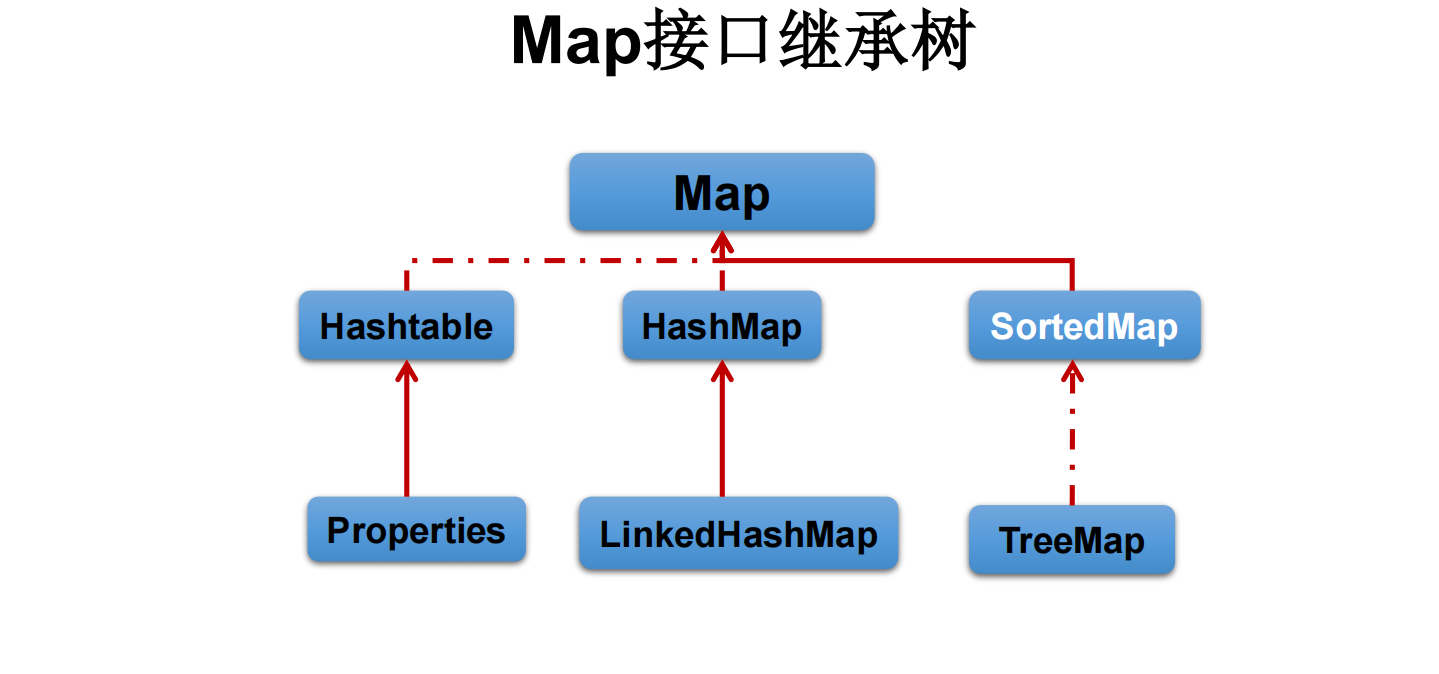
* I Map Structure of implementation class: * |----Map:Dual column data, storage key-value Right data ---Functions similar to high school: y = f(x) * |----HashMap:As Map Main implementation classes of; Unsafe thread and high efficiency; storage null of key and value * |----LinkedHashMap:Guaranteed in traversal map Elements can be traversed in the order of addition. * Reason: in the original HashMap Based on the underlying structure, a pair of pointers are added to point to the previous and subsequent elements. * For frequent traversal operations, this kind of execution efficiency is higher than HashMap. * |----TreeMap:Ensure that the added key-value Sort and realize sorting traversal. Consider at this time key Natural sorting or custom sorting * Red and black trees are used at the bottom * |----Hashtable:As an ancient implementation class; Thread safety and low efficiency; Cannot store null of key and value * |----Properties:Commonly used to process configuration files. key and value All String type * * * HashMap Bottom layer of: array+Linked list( jdk7 (and before) * array+Linked list+Red black tree( jdk 8) * * Interview questions: * 1. HashMap The underlying implementation principle of? * 2. HashMap and Hashtable Similarities and differences? * 3. CurrentHashMap And Hashtable Similarities and differences? (not for the time being) * */ -------- Copyright notice: This article is CSDN Blogger「lsqstudy」Original articles, follow CC 4.0 BY-SA Copyright agreement, please attach the original source link and this statement for reprint. Original link: https://blog.csdn.net/PorkBird/article/details/113727330
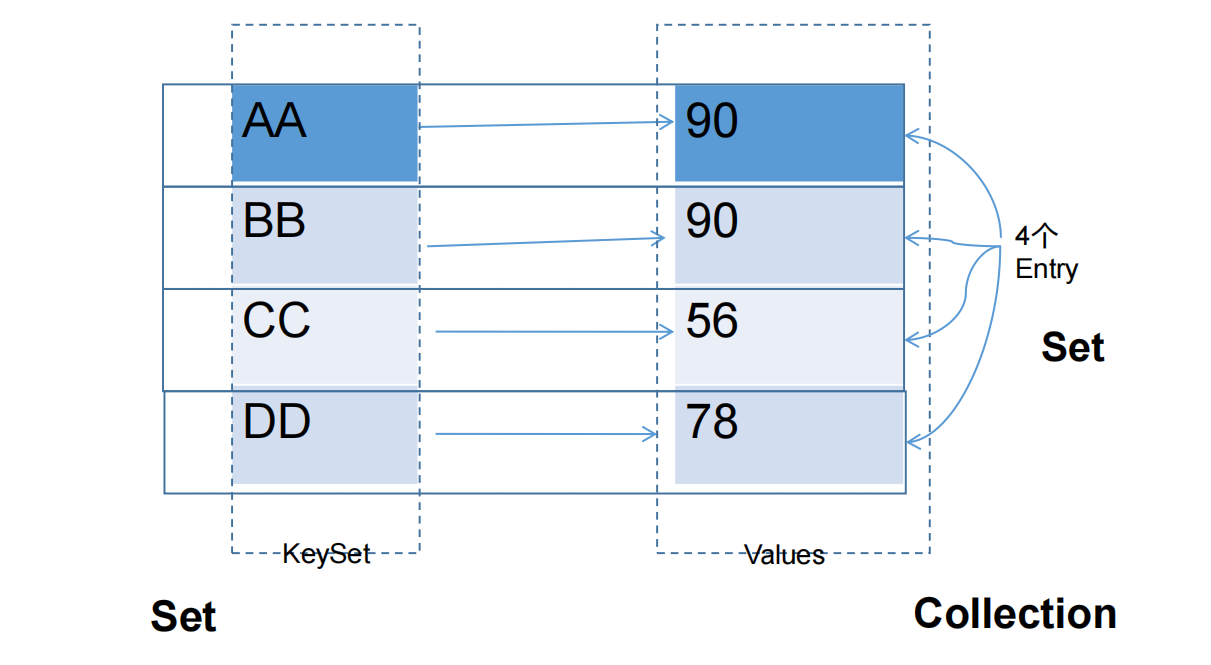
/**
* II. Understanding of Map structure:
* keys in Map: unordered and non repeatable. Use Set to store all keys -- > the class where the key is located should override equals() and hashCode() (take HashMap as an example)
* value in Map: unordered and repeatable. Use Collection to store all values -- > the class where value is located should override equals()
* a key value pair: key value constitutes an Entry object.
* entries in Map: unordered and non repeatable. Use Set to store all entries
*
*/
2.HashMap
HashMap is the most frequently used implementation class of Map interface.
Underlying implementation principle of HashMap:
JDK 7 and previous versions: HashMap is an array + linked list structure (i.e. chain address method)
After the release of JDK version 8: HashMap is realized by array + linked list + red black tree.
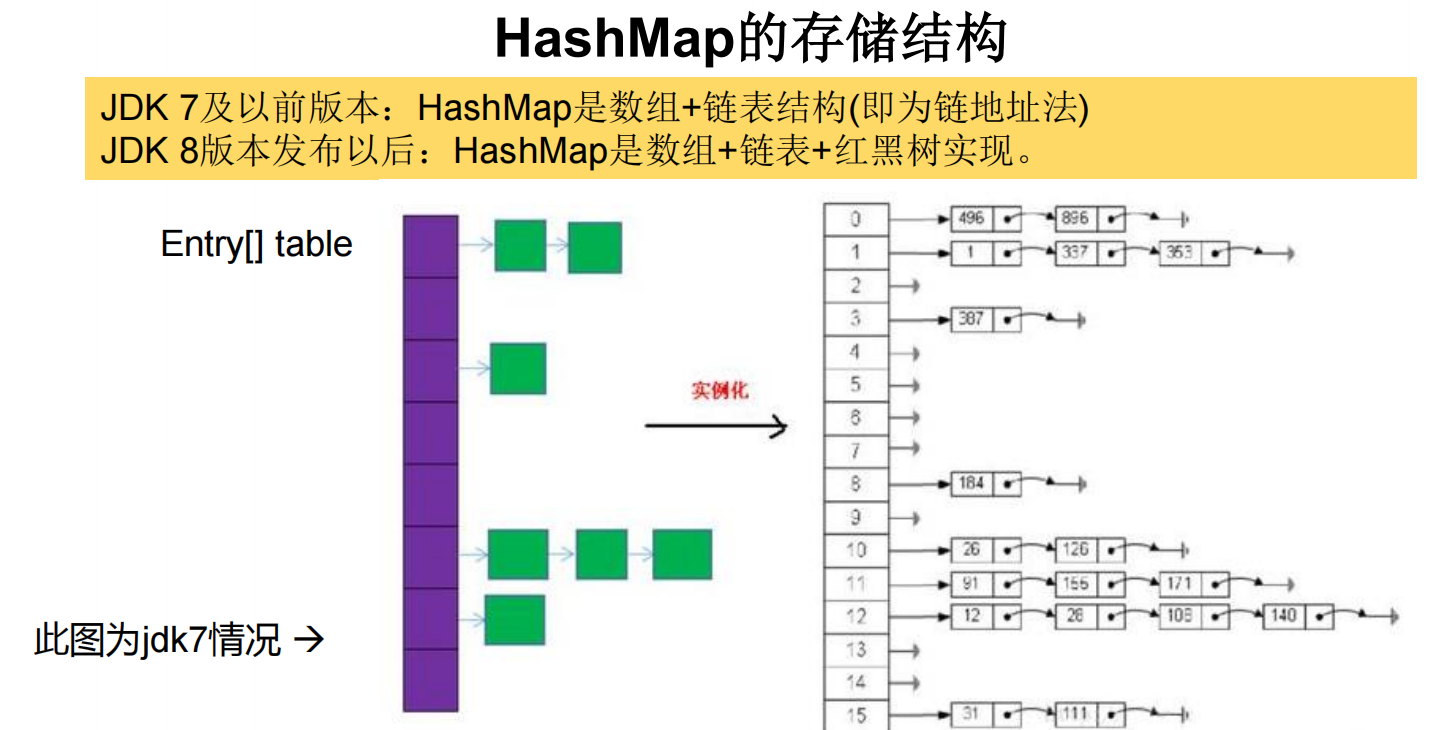
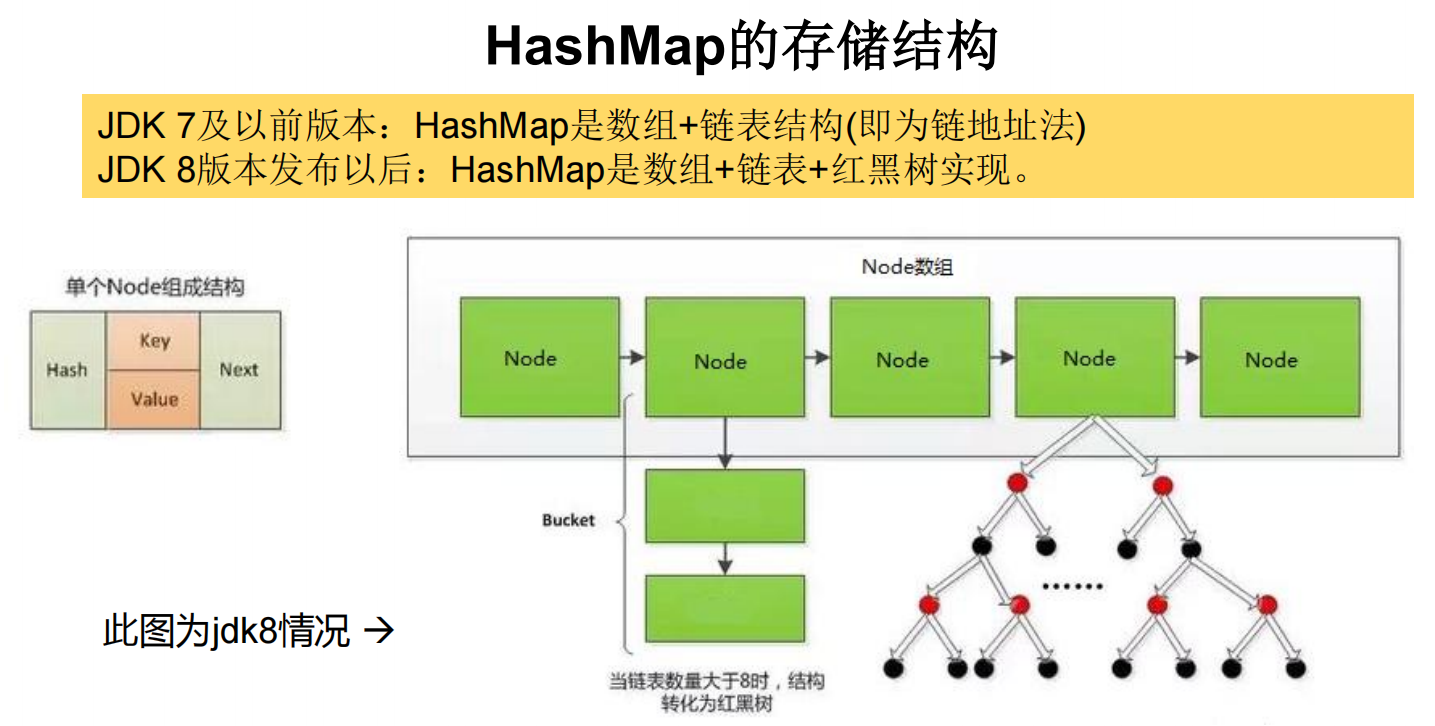
Important constants in HashMap source code:
/*
* DEFAULT_ INITIAL_ Capability: default capacity of HashMap, 16
* DEFAULT_LOAD_FACTOR: default load factor of HashMap: 0.75
* threshold: critical value of capacity expansion, = capacity * filling factor: 16 * 0.75 = > 12
* TREEIFY_THRESHOLD: if the length of the linked list in the Bucket is greater than the default value, it will be converted into a red black tree: 8
* MIN_ TREEIFY_ Capability: minimum hash table capacity when nodes in the bucket are trealized: 64
*/
6.4.1 underlying implementation principle of HashMap in JDK7
6.4.2 underlying implementation principle of HashMap in JDK8
6.7. Underlying implementation principle of LinkedHashMap (understand)
https://blog.csdn.net/PorkBird/article/details/113727330
6.8 common methods and links in Map are the same as above
6.10 use of two ways of adding TreeMap (NATURAL sorting and customized sorting)
6.12,Hashtable
6.13. Properties processing property file
3.Collections -- is the tool class of collection and Map
// sorting operations: (all static methods)
// reverse(List): reverse the order of elements in the List
// shuffle(List): randomly sort the elements of the List set
// sort(List): sort the elements of the specified List set in ascending order according to the natural order of the elements
// sort(List, Comparator): sort the List set elements according to the order generated by the specified Comparator
// swap(List, int, int): exchange the elements at i and j in the specified list set
//
@Test
public void Test(){
List list = new ArrayList();
list.add(123);
list.add(234);
list.add(2);
list.add(3);
System.out.println(list);
Collections.reverse(list);
System.out.println(list);
Collections.shuffle(list);
System.out.println(list);
Collections.sort(list);
System.out.println(list);
System.out.println("***************");
Collections.sort(list, new Comparator() {
@Override
public int compare(Object o1, Object o2) {
if (o1 instanceof Integer && o2 instanceof Integer){
Integer i1 = (Integer) o1;
Integer i2 = (Integer) o2;
return -Integer.compare(i1,i2);
}else {
throw new RuntimeException("The type entered is incorrect");
}
}
});
System.out.println(list);
Collections.swap(list,1,2);
System.out.println(list);
}
//Find, replace
// Object max(Collection): returns the largest element in a given set according to the natural order of elements
// Object max(Collection, Comparator): returns the largest element in a given set according to the order specified by the Comparator
// Object min(Collection)
// Object min(Collection,Comparator)
// int frequency(Collection, Object): returns the number of occurrences of the specified element in the specified collection
// void copy(List dest,List src): copy the contents of src to dest
// Boolean replaceall (List, Object oldVal, Object newVal): replace all old values of the List object with new values
@Test
public void Test1(){
List list = new ArrayList();
list.add(123);
list.add(234);
list.add(2);
list.add(3);
list.add(3);
List list1 = new ArrayList();
list1.add(999);
Object obj = Collections.max(list);
System.out.println(obj);
obj = Collections.min(list);
System.out.println(obj);
System.out.println("*****************");
System.out.println(Collections.frequency(list,3));
Collections.copy(list,list1);
System.out.println(list);
Collections.replaceAll(list,3,88);
System.out.println(list);
System.out.println("++++++++++++++");
/**
* Collections Class provides multiple synchronizedXxx() methods,
* This method can wrap the specified set into a thread synchronized set, which can solve the problem
* Thread safety in multithreaded concurrent access to collections
*/
//The returned list2 is the thread safe list
List list2 = Collections.synchronizedList(list);
System.out.println(list2);
}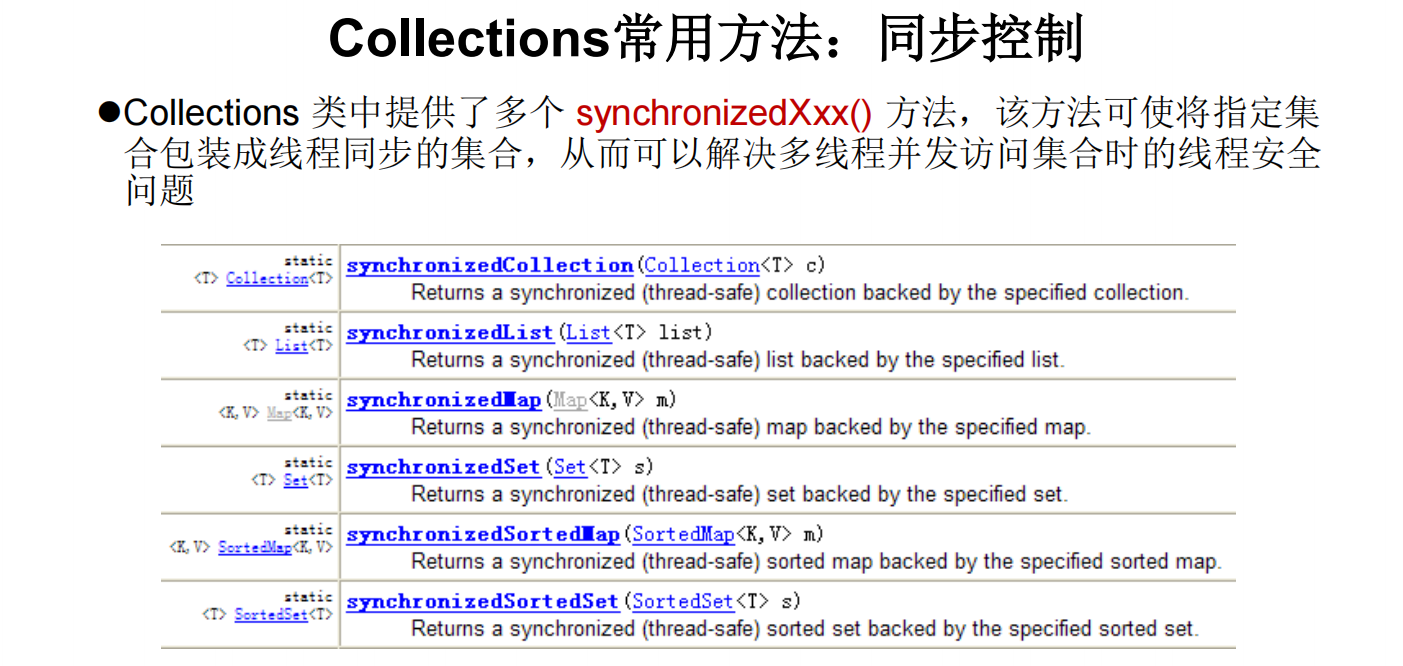
7.2. Supplement: Enumeration (understand!!!)